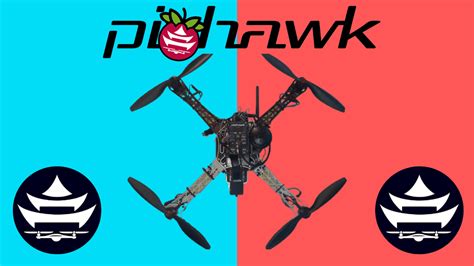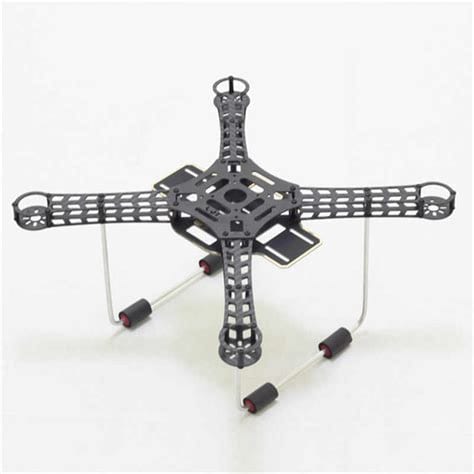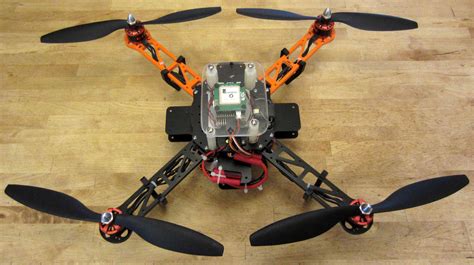Understanding the Basics of a Custom Drone Board
At its core, a custom drone board is a printed circuit board (PCB) designed specifically for a particular drone model or application. The board houses and connects all the necessary electronic components, such as the flight controller, sensors, power management system, and communication modules.
Key Components of a Custom Drone Board
- Flight Controller
- Sensors
- Electronic Speed Controllers (ESCs)
- Power Distribution Board (PDB)
- Communication Modules
- GPS Module
- Battery Management System (BMS)
The Flight Controller: The Brain of the Custom Drone Board
The flight controller is the central processing unit of the custom drone board, responsible for interpreting sensor data, executing control algorithms, and sending commands to the motors and other peripherals. It is essentially the brain of the drone, making decisions based on user input and environmental factors.
Popular Flight Controller Firmware
| Firmware | Description |
|---|---|
| Betaflight | Open-source firmware for racing and freestyle drones |
| ArduPilot | Versatile firmware for various drone applications |
| PX4 | Professional-grade firmware for commercial and research use |
| Kiss | High-performance firmware for racing drones |
Choosing the Right Flight Controller
When selecting a flight controller for your custom drone board, consider the following factors:
- Compatibility with your desired firmware
- Processing power and memory
- Number and types of supported sensors
- Expansion options for additional peripherals
- Size and weight

Sensors: Enabling Awareness and Stability
Sensors play a crucial role in providing the flight controller with data about the drone’s orientation, position, and surrounding environment. This information is essential for maintaining stability, navigating, and executing autonomous functions.
Common Sensors Found on Custom Drone Boards
- Inertial Measurement Unit (IMU)
- Accelerometer
- Gyroscope
- Barometer
- Magnetometer (Compass)
- GPS/GNSS Receiver
- Optical Flow Sensor
- Rangefinder (Ultrasonic or Laser)
Sensor Fusion and Filtering
To obtain accurate and reliable data, the flight controller employs sensor fusion algorithms, such as the Extended Kalman Filter (EKF) or Complementary Filter, which combine measurements from multiple sensors to estimate the drone’s state. These algorithms help to reduce noise, compensate for sensor drift, and provide a more stable and precise control input.

Electronic Speed Controllers (ESCs): Delivering Power to the Motors
Electronic Speed Controllers (ESCs) are responsible for converting the flight controller’s commands into electrical signals that drive the motors. They regulate the power delivered to each motor, allowing for precise speed and directional control.
Types of ESCs
- Brushed ESCs
- For brushed motors
- Simpler and more affordable
- Suitable for small, lightweight drones
- Brushless ESCs
- For brushless motors
- More efficient and powerful
- Suitable for larger, high-performance drones
ESC Specifications
When choosing ESCs for your custom drone board, consider the following specifications:
| Specification | Description |
|---|---|
| Current Rating | Maximum continuous current the ESC can handle |
| Voltage Rating | Supported battery voltage range |
| PWM Frequency | Switching frequency for smoother motor control |
| Programmability | Ability to configure settings via software or programming card |

Power Distribution Board (PDB): Streamlining Power Delivery
The Power Distribution Board (PDB) is responsible for distributing power from the battery to the various components on the custom drone board, such as the flight controller, ESCs, and sensors. It simplifies wiring and provides a centralized power hub, making the overall design more compact and efficient.
Features of a Well-Designed PDB
- Multiple voltage regulators for different components
- Built-in current sensing for monitoring power consumption
- Overcurrent and reverse polarity protection
- Modular design for easy installation and maintenance
- Compatibility with various battery connectors and voltages
Communication Modules: Keeping the Drone Connected
Communication modules enable the drone to maintain a link with the ground control station (GCS) or remote control (RC) transmitter. They allow for real-time telemetry, command transmission, and data exchange between the drone and the operator.
Common Communication Protocols
- Radio Frequency (RF)
- 2.4 GHz (e.g., FrSky, Spektrum, FlySky)
- 900 MHz (e.g., TBS Crossfire, Futaba FASST)
- Wi-Fi
- 2.4 GHz and 5.8 GHz bands
- Used for video transmission and telemetry
- Bluetooth
- Short-range communication
- Used for configuration and data transfer
Choosing the Right Communication Module
When selecting a communication module for your custom drone board, consider the following factors:
- Range and reliability
- Latency and data rate
- Compatibility with your GCS or RC transmitter
- Size and weight
- Power consumption
GPS Module: Enabling Autonomous Flight and Navigation
A GPS (Global Positioning System) module provides the drone with accurate position and velocity information, enabling features such as autonomous flight, waypoint navigation, and return-to-home functionality.
Benefits of Including a GPS Module
- Improved stability and hovering accuracy
- Autonomous flight capabilities
- Geofencing and no-fly zone compliance
- Enhanced telemetry data for post-flight analysis
Choosing the Right GPS Module
When selecting a GPS module for your custom drone board, consider the following factors:
- Accuracy and update rate
- Compatibility with your flight controller
- Support for additional satellite systems (e.g., GLONASS, Galileo)
- Size and weight
- Power consumption
Battery Management System (BMS): Ensuring Safe and Efficient Power Usage
A Battery Management System (BMS) monitors and manages the drone’s battery, ensuring safe and efficient power usage. It protects the battery from overcharging, over-discharging, and excessive current draw, prolonging its lifespan and preventing potential hazards.
Features of a Well-Designed BMS
- Voltage and current monitoring
- Temperature sensing
- Cell balancing
- Overcharge and over-discharge protection
- Short-circuit protection
- Compatibility with various battery chemistries (e.g., LiPo, Li-Ion)
Frequently Asked Questions (FAQ)
-
Q: Can I use a pre-built flight controller for my custom drone board?
A: Yes, you can use a pre-built flight controller, such as a Pixhawk or Naze32, as the core of your custom drone board. However, you may need to adapt the board layout and wiring to accommodate the specific requirements of your drone design. -
Q: How do I choose the right components for my custom drone board?
A: When selecting components for your custom drone board, consider factors such as compatibility, performance, size, weight, and power consumption. Research and compare different options, and consult with experienced drone builders or online communities for guidance. -
Q: What software do I need to design and build a custom drone board?
A: To design a custom drone board, you’ll need PCB design software, such as KiCad, Eagle, or Altium Designer. For programming and configuring the flight controller, you’ll use the software associated with your chosen firmware, such as Betaflight Configurator, Mission Planner, or QGroundControl. -
Q: How do I ensure the reliability and safety of my custom drone board?
A: To ensure the reliability and safety of your custom drone board, follow best practices in PCB design, such as proper grounding, signal integrity, and power management. Conduct thorough testing and calibration of all components, and implement failsafe mechanisms, such as battery voltage monitoring and automatic return-to-home. -
Q: Can I add additional features or sensors to my custom drone board?
A: Yes, you can add additional features or sensors to your custom drone board, depending on your specific requirements and the capabilities of your flight controller. Many flight controllers offer expansion ports or headers for connecting additional peripherals, such as cameras, airspeed sensors, or companion computers.
Conclusion
The core of a custom drone board is a complex system of interconnected components that work together to enable a drone to fly safely, efficiently, and effectively. By understanding the roles and characteristics of each component, such as the flight controller, sensors, ESCs, PDB, communication modules, GPS, and BMS, you can design and build a custom drone board tailored to your specific needs and applications.
When embarking on a custom drone board project, it is essential to carefully select components based on compatibility, performance, and reliability. Proper PCB design, thorough testing, and adherence to best practices in power management and signal integrity are crucial for ensuring the safety and longevity of your custom drone board.
As the drone industry continues to evolve, new technologies and components will emerge, offering even more possibilities for custom drone board designs. By staying informed and adapting to these advancements, you can create innovative and high-performance drones that push the boundaries of what is possible in aerial robotics.

No responses yet